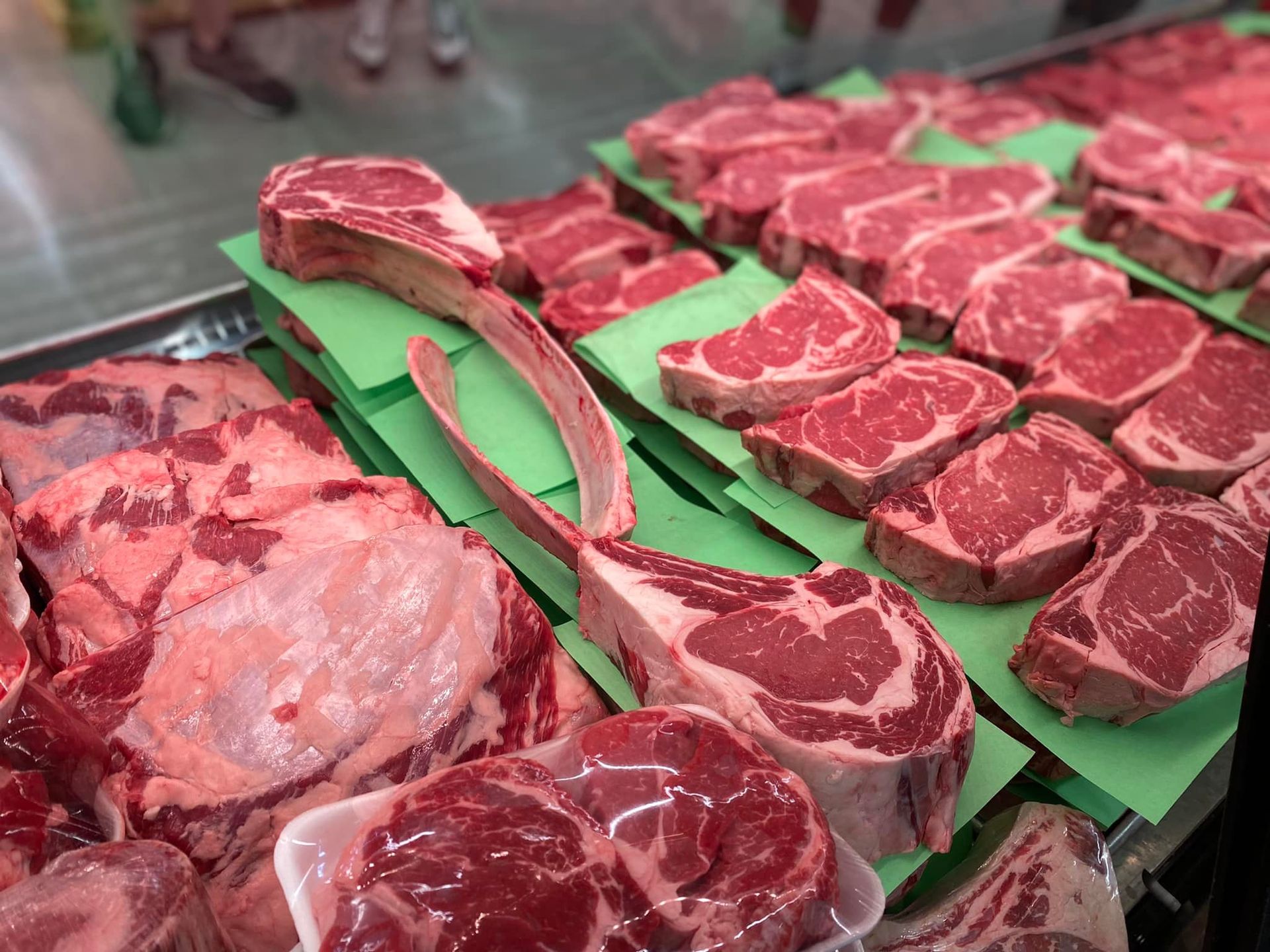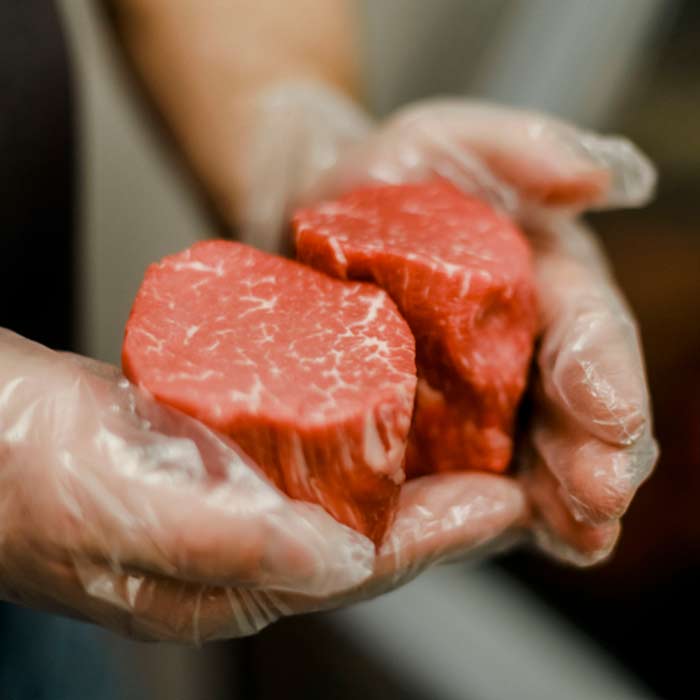Browse Through Bagley Farms Meat Market Edwardsville IL for Farm-Fresh Meat and Specialized Cuts
Browse Through Bagley Farms Meat Market Edwardsville IL for Farm-Fresh Meat and Specialized Cuts
Blog Article
Uncover the Art of the Butcher's Cut in a Modern Meat Market
In the ever-evolving landscape of contemporary meat markets, the butcher's cut has transcended its traditional roots, merging olden craftsmanship with modern practices. bagley farms meat market edwardsville il. Today's butchers are not just processors of meat; they are well-informed craftsmens that highlight sustainability and honest sourcing. Their expertise in picking and preparing cuts tailored to particular culinary demands offers an unrivaled eating experience. What truly sets the modern butcher apart is their capability to forge a much deeper connection between customers and the beginnings of their meat. How do these masters equilibrium custom with innovation, and what effects does this have for the future of meat consumption?
Evolution of Butchery Techniques

The mid-20th century saw butchery strategies additionally refined by clinical insights right into muscle biology and meat aging, improving both inflammation and preference. Developments like vacuum product packaging and refrigeration expanded item shelf-life, enabling butchers to diversify offerings and improve quality assurance. This duration additionally marked the rise of customized tools, such as band saws and meat slicers, which raised accuracy and performance in meat processing.
Computerized systems currently assist in monitoring pet provenance and maximizing cuts to meet details customer preferences. In addition, a renewal in artisanal butchery has actually emerged, blending traditional abilities with modern knowledge to provide to consumers looking for moral and sustainable meat alternatives.

Comprehending Meat Cuts

Comprehending the ins and outs of meat cuts is crucial for both butchers and customers looking for high quality and value. For butchers, specific cuts show ability and regard for the craft, making certain minimal waste and optimal return.
The main groups of meat cuts include primitive, sub-primal, and retail cuts. Butchers after that break these down even more right into sub-primal cuts, before ultimately creating retail cuts offered to consumers, like ribeye or tenderloin.
Comprehending muscle composition is essential; muscle mass utilized extra frequently by the pet tend to be tougher and are best fit for sluggish food preparation techniques, while less-used muscular tissues, like those found in the loin, are much more tender and perfect for barbecuing or roasting. Experience with these differences encourages consumers to make informed options, enhancing their culinary endeavors.
Picking High Quality Meat
Selecting the right meat entails greater than just picking an aesthetically attractive piece from the display screen. The art of selecting quality meat requires a critical eye and knowledge of certain qualities that indicate freshness and excellence. Pay focus to the color; beef needs to have a bright, cherry-red color, while lamb ought to display a soft pink tone, and pork a pale pink. This shows the meat is fresh and hasn't been subjected to oxygen for as well lengthy.
Second of all, think about the marbling, which describes the white flecks of fat within the muscle mass. Appropriate marbling is a key indication of inflammation and flavor, as it melts during cooking, enhancing the meat's juiciness. Bear in mind, greater marbling usually correlates with exceptional top quality cuts, such as USDA Prime.
Appearance is another vital aspect; meat ought to really feel firm to the touch, not slimed or overly soft. Furthermore, be mindful of the scent. Fresh meat needs to have a clean, neutral smell, without any type of sour or repulsive smells.
Matching Cuts With Food Preparation Methods
Effectively matching cuts of meat with the proper cooking methods is necessary for achieving optimum taste and appearance. These techniques improve the meat's natural flavors and ensure a juicy coating.
Alternatively, tougher cuts like brisket and chuck roast are abundant in collagen, which damages down into you could try this out jelly when cooked slowly. These cuts are optimal for braising or slow roasting, enabling the meat to soften over time and establish deep, complex tastes. Similarly, cuts such as brief ribs and pork shoulder prosper with slow-cooking approaches, where extended cooking times transform their robust structures into succulent recipes.
Lamb shanks and oxtail, which require prolonged cooking to soften, are ideal candidates for cooking or sluggish simmering. These techniques coax out rich, hearty tastes while maintaining dampness. By recognizing the click here for more info distinct features of each cut, chefs and home chefs alike can elevate their culinary developments, making sure each recipe is both pleasing and remarkable.
The Butcher's Duty Today
Navigating the progressing landscape of the modern-day meat market, the butcher's duty today extends beyond mere prep work of cuts. Contemporary butchers are cooking artisans, educators, and advocates for sustainable practices. They link the space in between the ranch and the fork by making sure moral sourcing, recognizing animal husbandry, and prioritizing transparency in the supply chain. This change shows the growing consumer demand for high quality over quantity, where provenance and animal welfare are critical.
Along with crafting specific cuts, butchers now engage straight with customers, using cooking recommendations and customizing selections to match specific demands and preferences. Their know-how in meat aging, marbling, and flavor profiles equips consumers to make educated decisions, enhancing their cooking experiences. This personalized service exemplifies the butcher's developing role as a trusted consultant in the kitchen area.
In addition, butchers are critical in minimizing waste, utilizing whole pets to create varied products such as sausages and supplies - bagley farms meat market edwardsville il. This comprehensive approach not only respects the pet but also straightens with contemporary sustainability objectives. In this way, the contemporary butcher personifies both custom and development, adjusting to an ever-changing market while preserving the artistry and integrity of their craft

Final Thought
The modern butcher's craft intricately weaves typical techniques with modern innovations, highlighting sustainable practices and ethical sourcing. Proficiency in comprehending diverse meat cuts and top quality signs empowers butchers to give educated referrals, lining up details cuts with optimal cooking methods. This knowledge not just raises cooking experiences but additionally strengthens the connection between customers and the beginnings of their food. By recognizing historic see here practices while welcoming contemporary demands, the butcher's duty stays crucial in today's sophisticated meat market.
Report this page